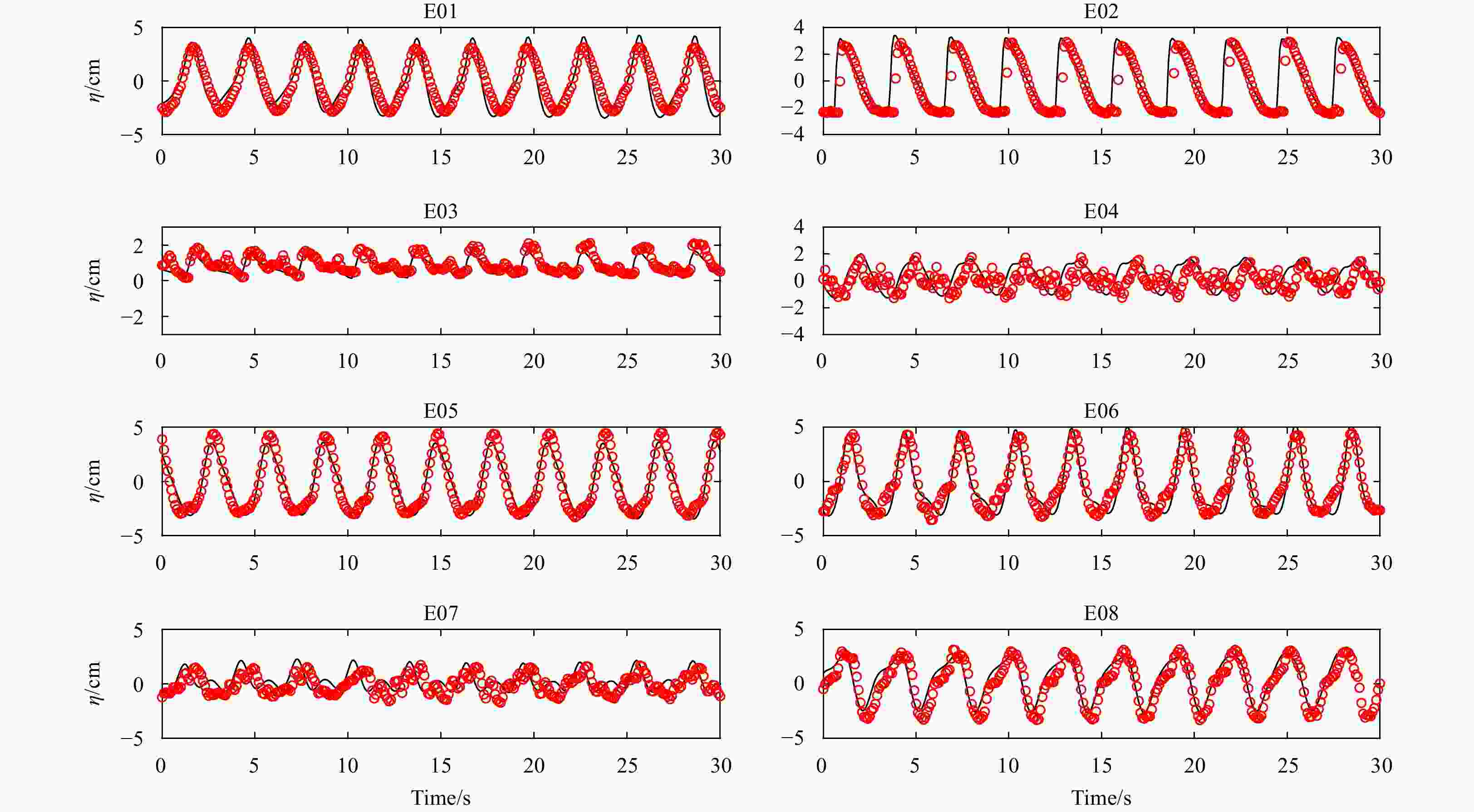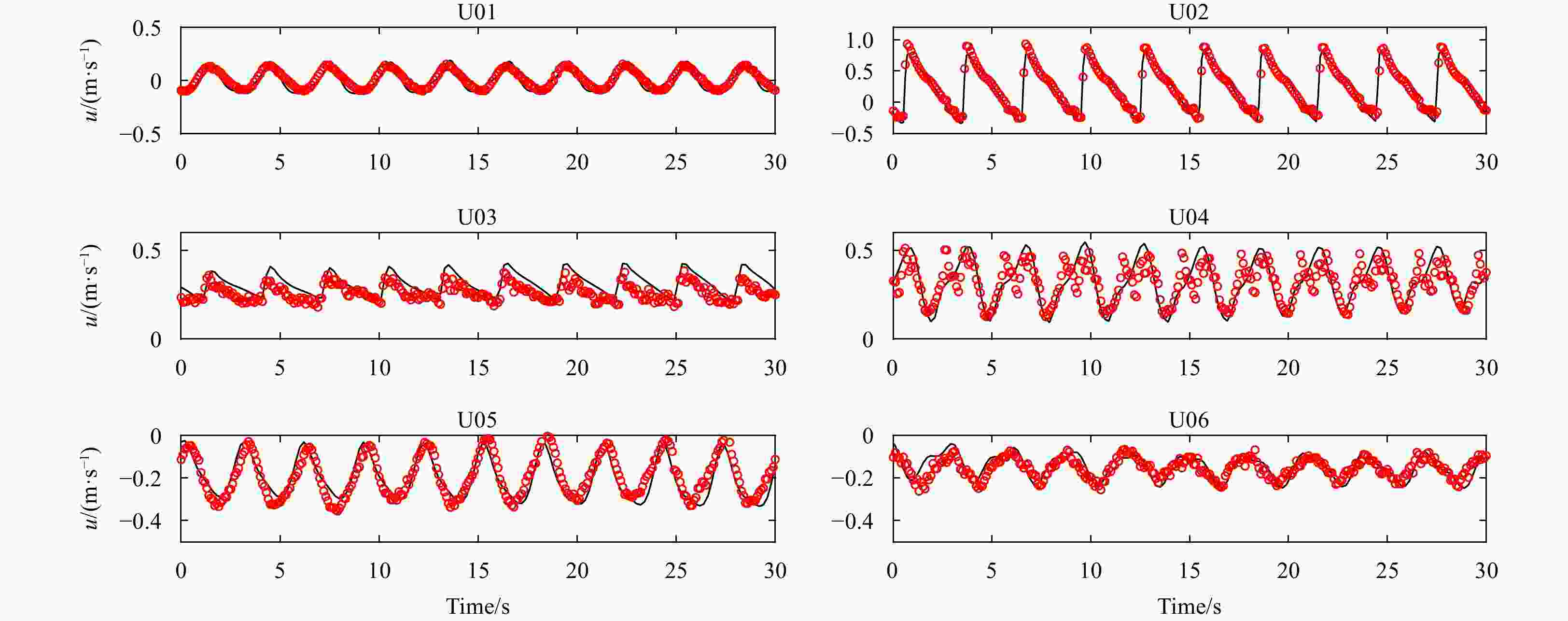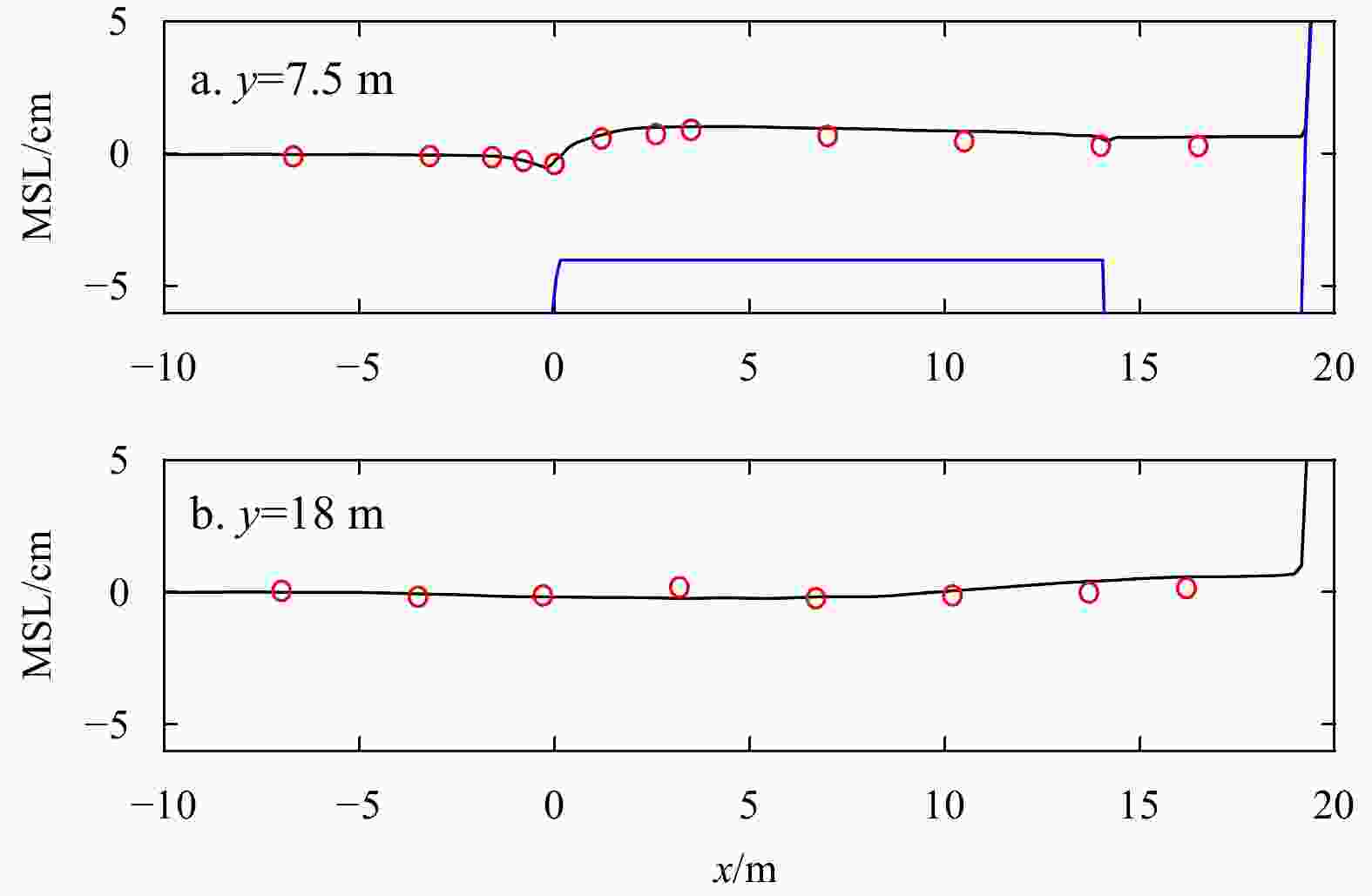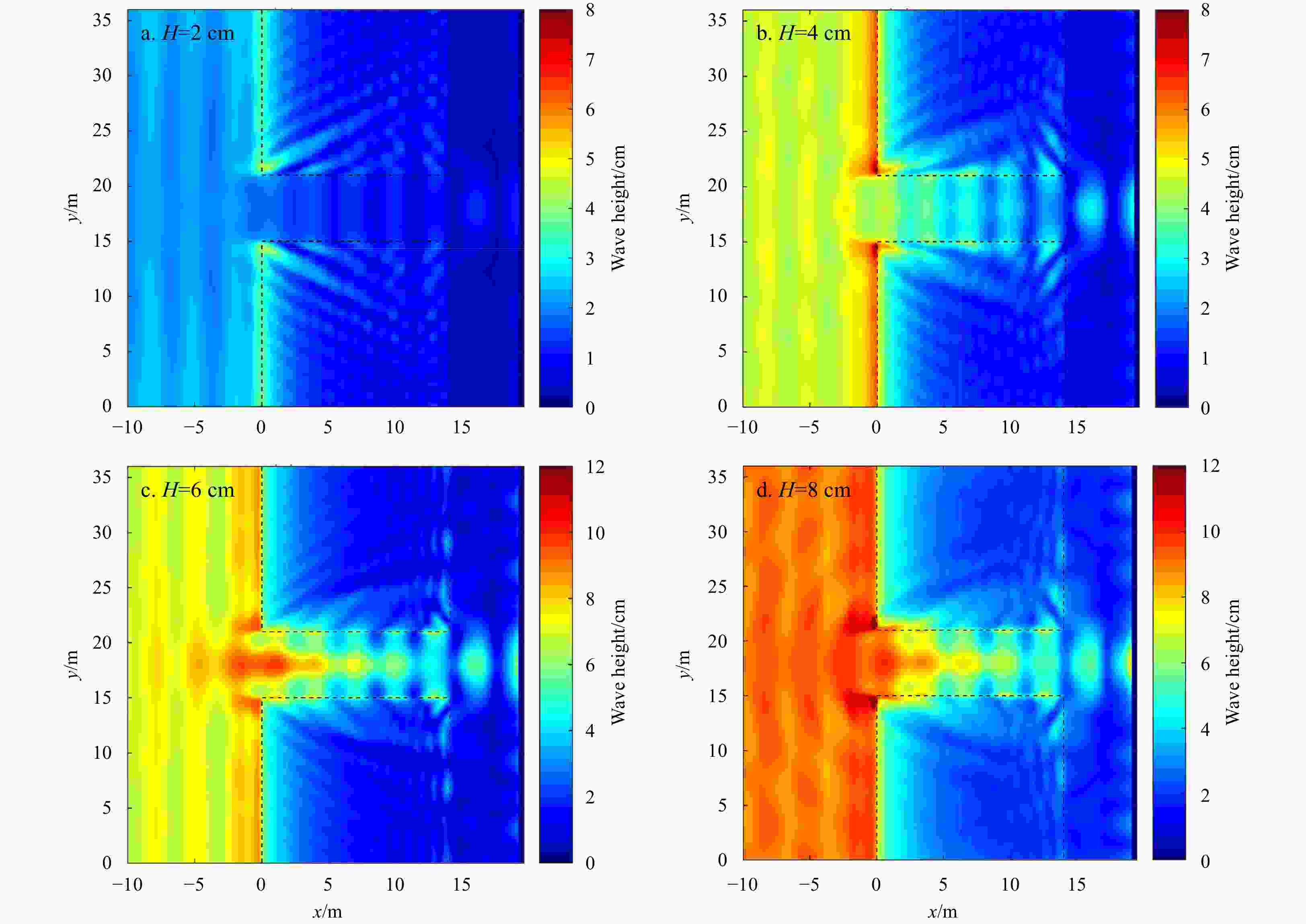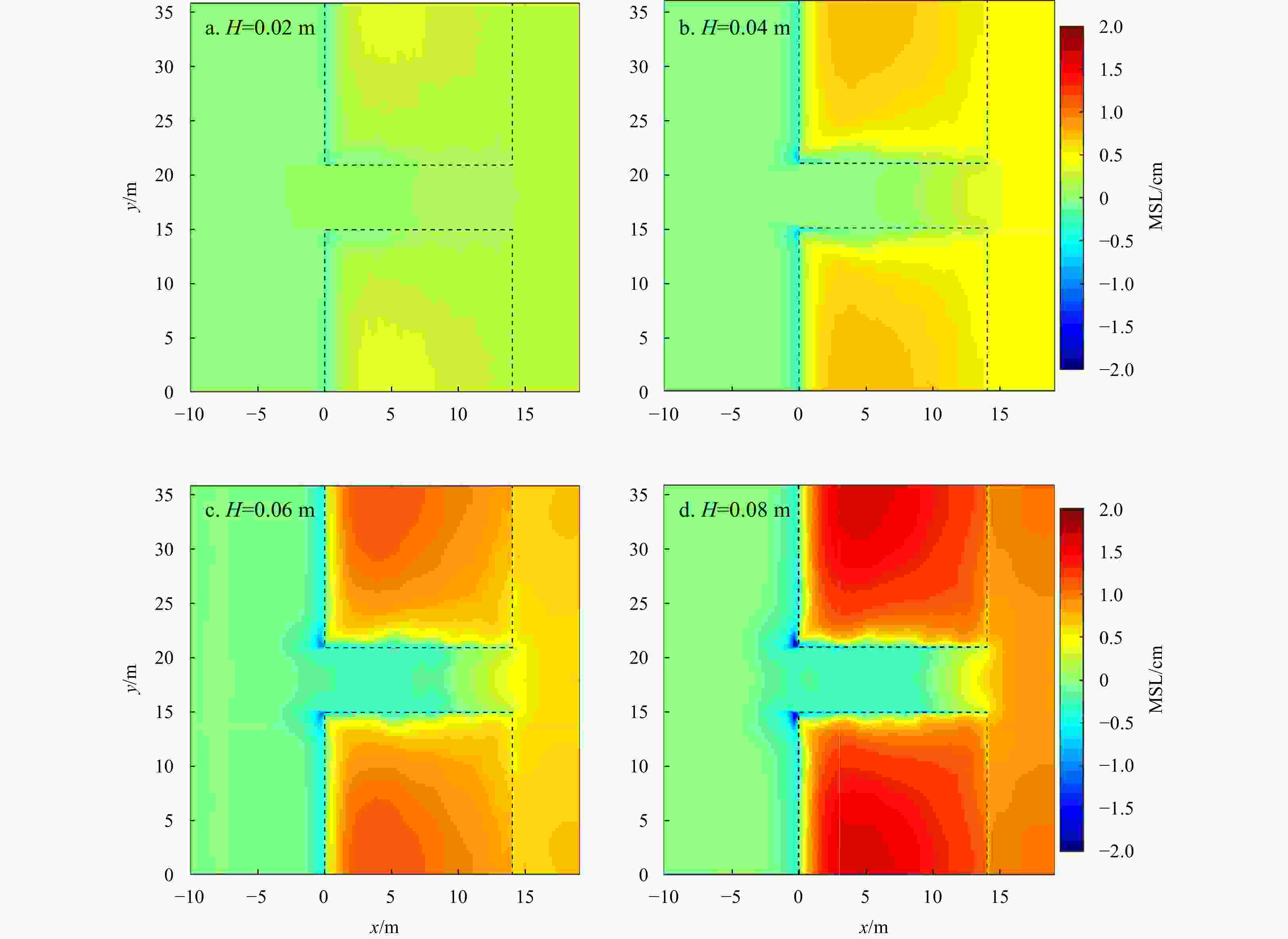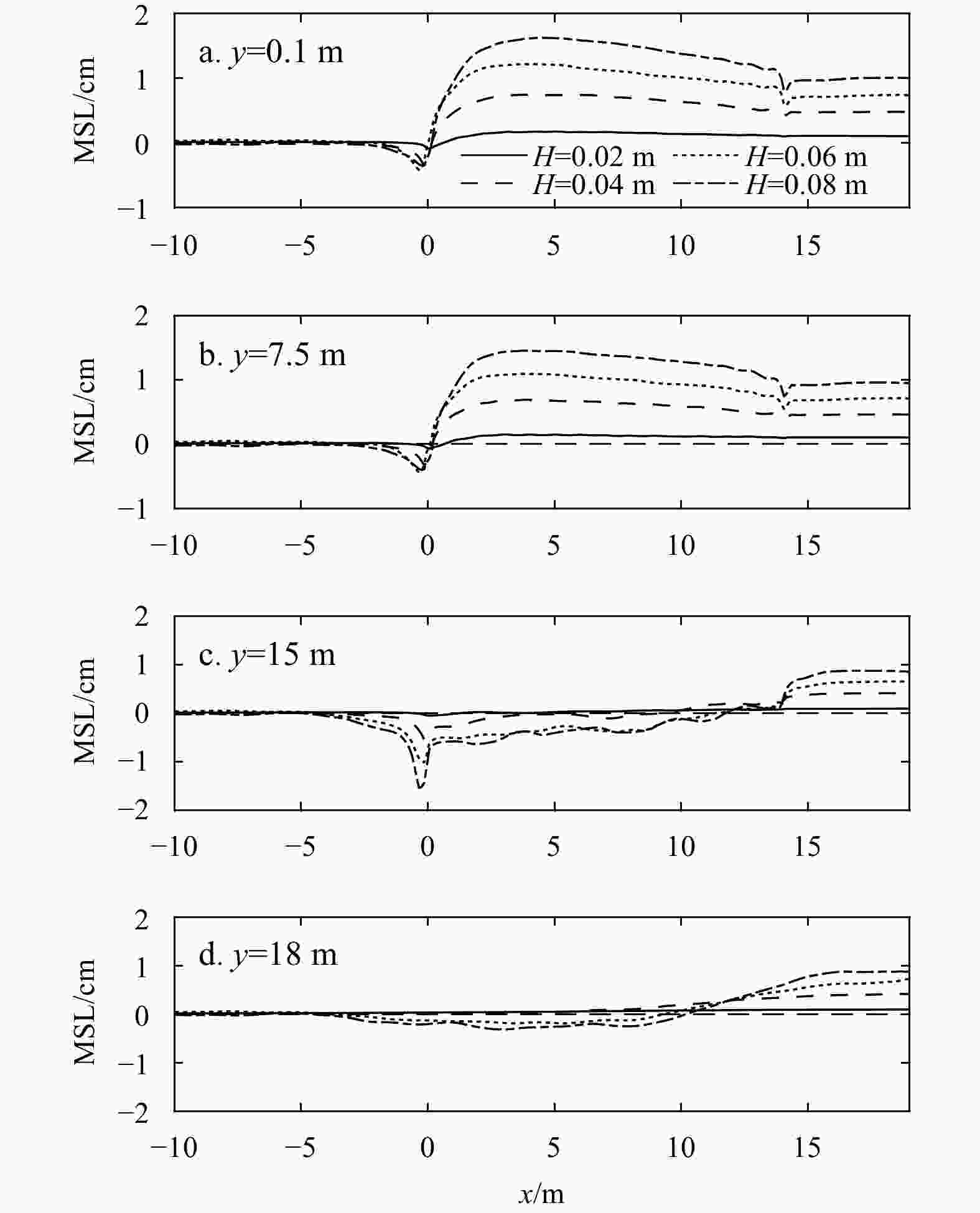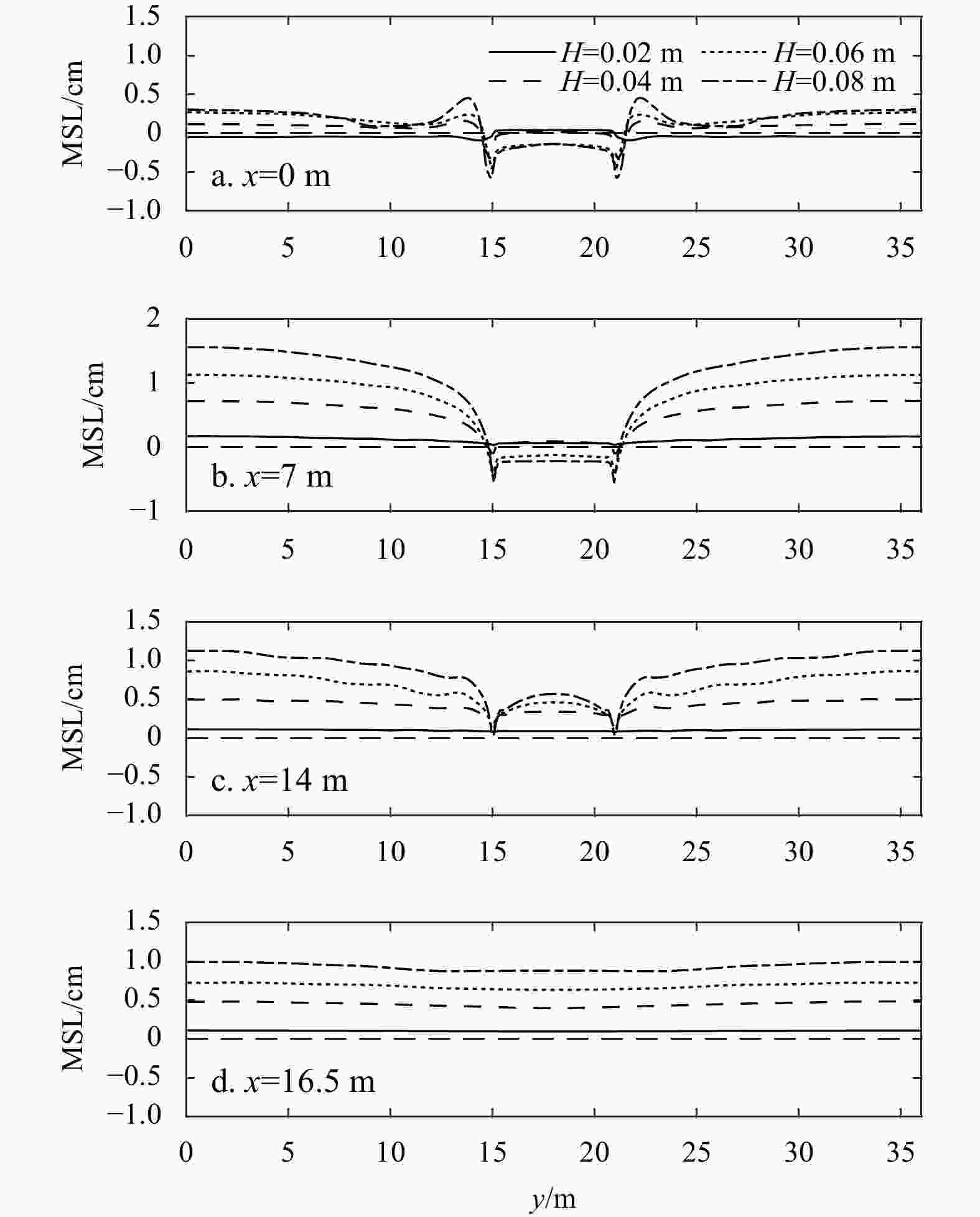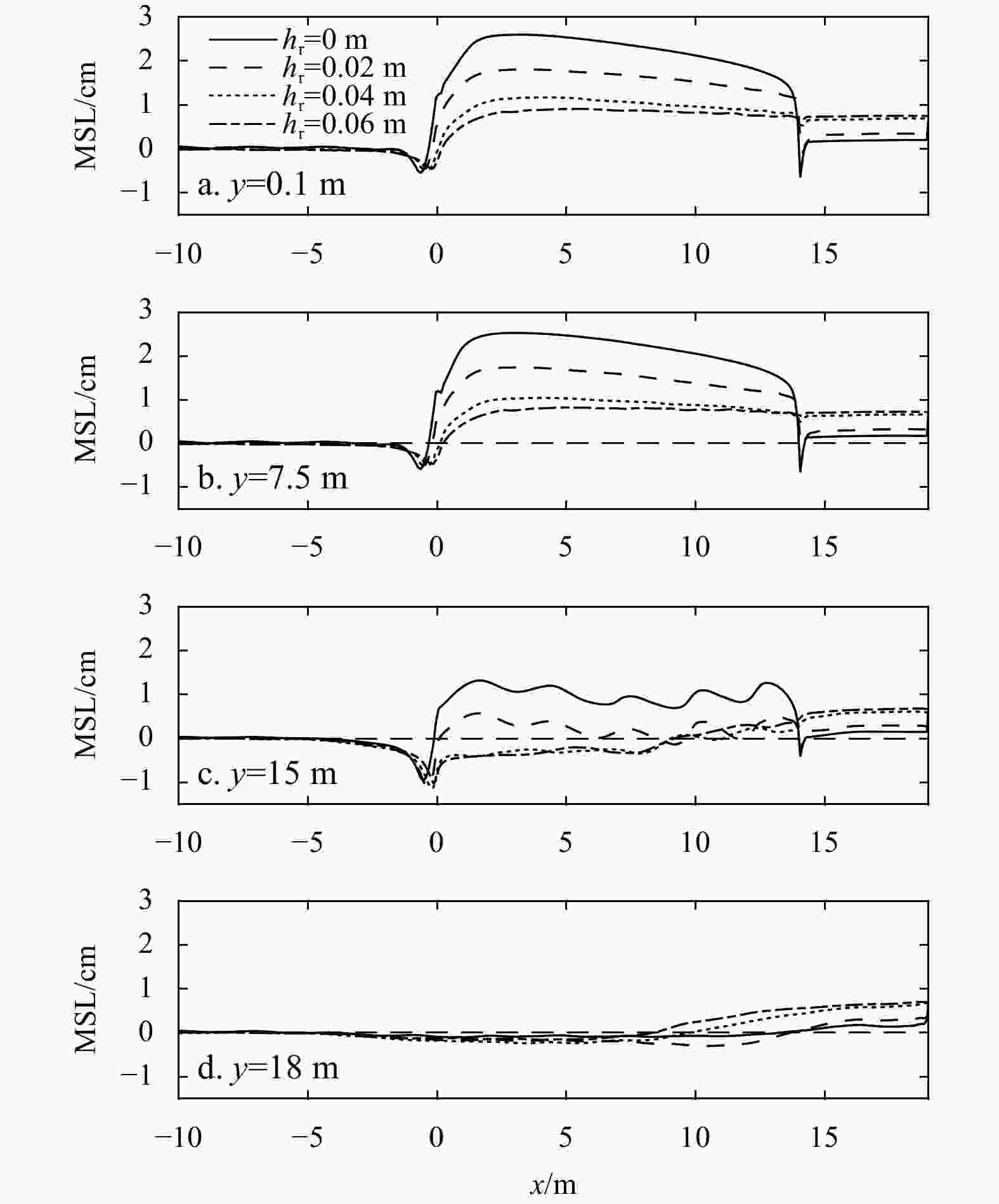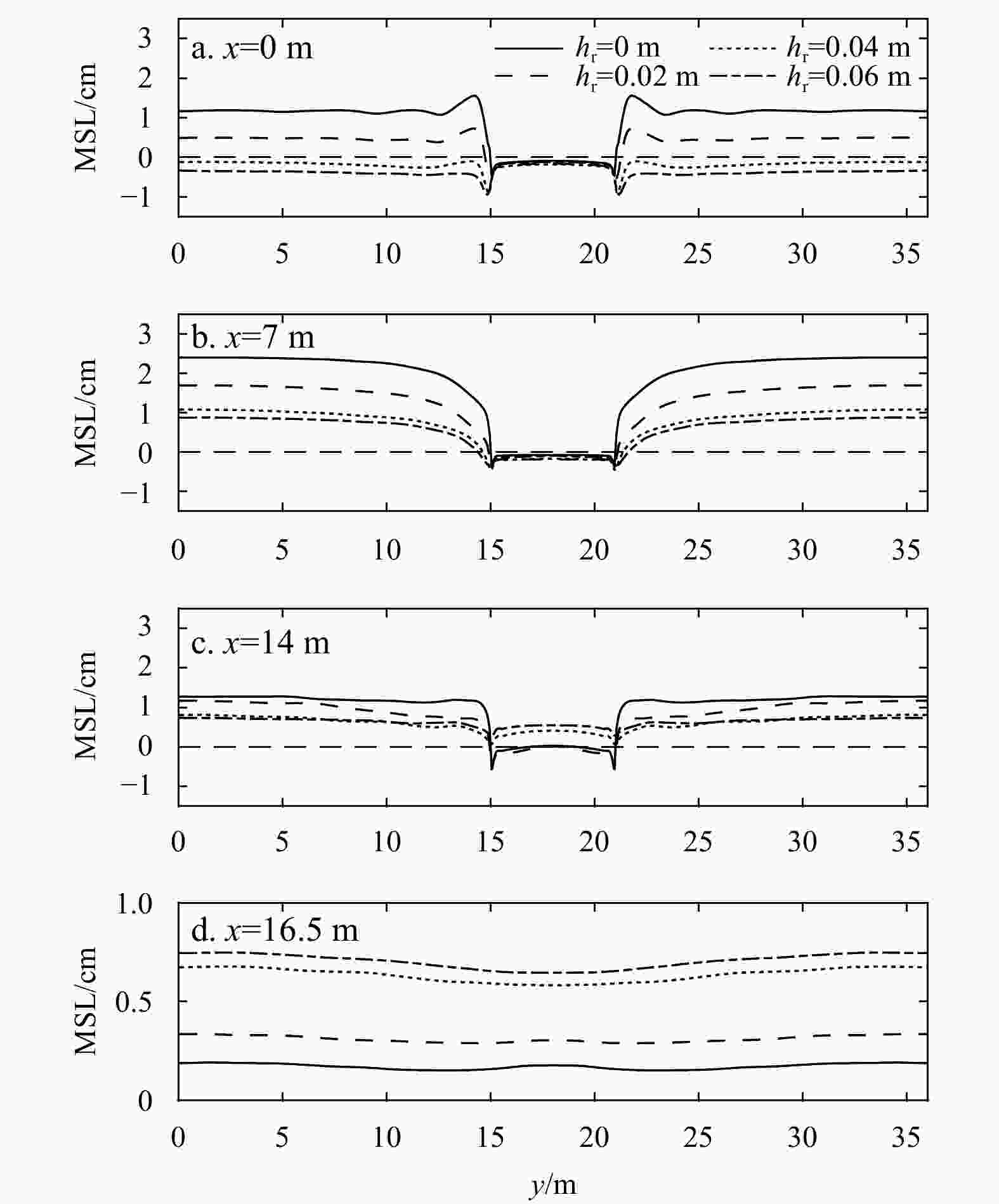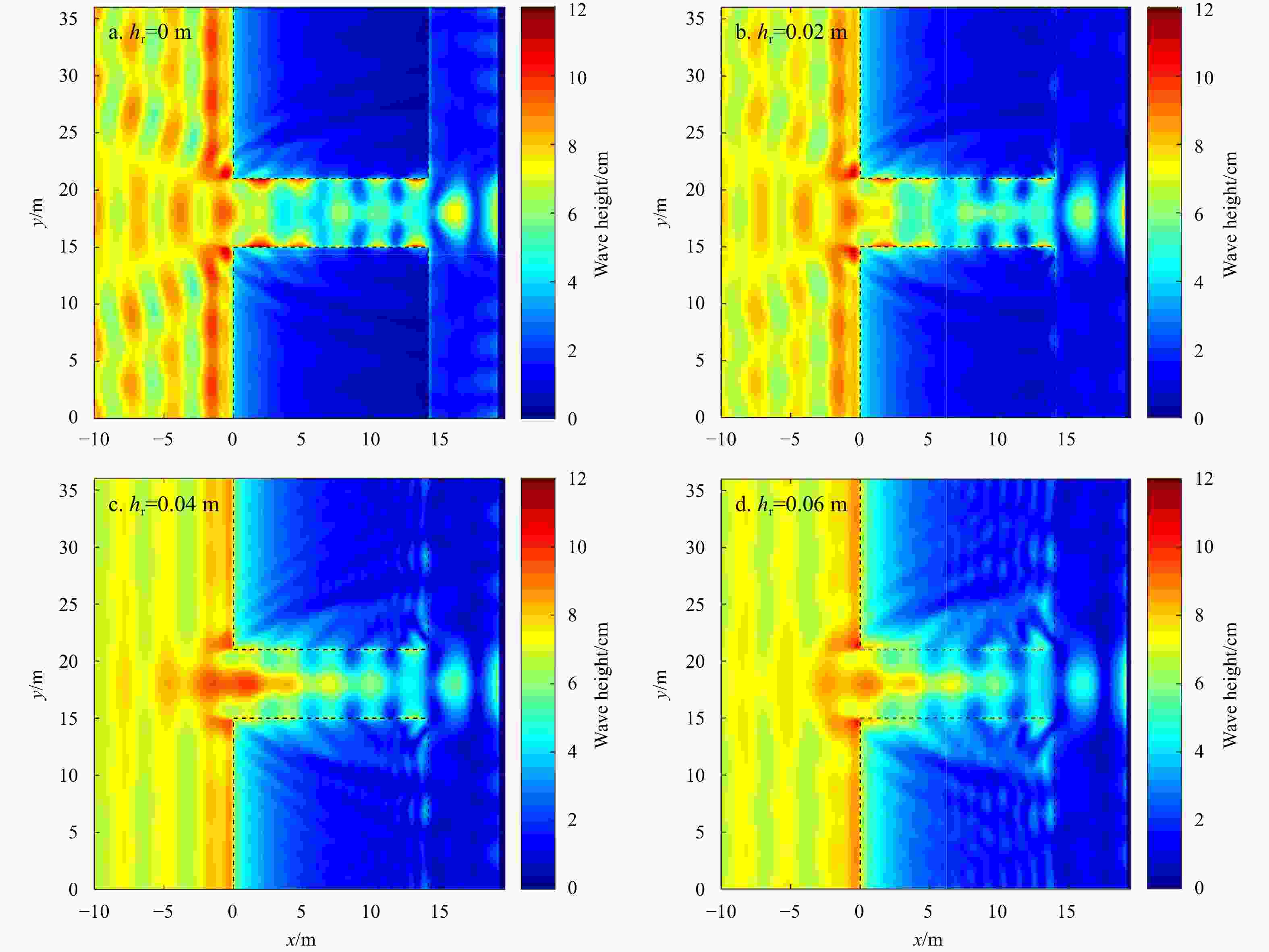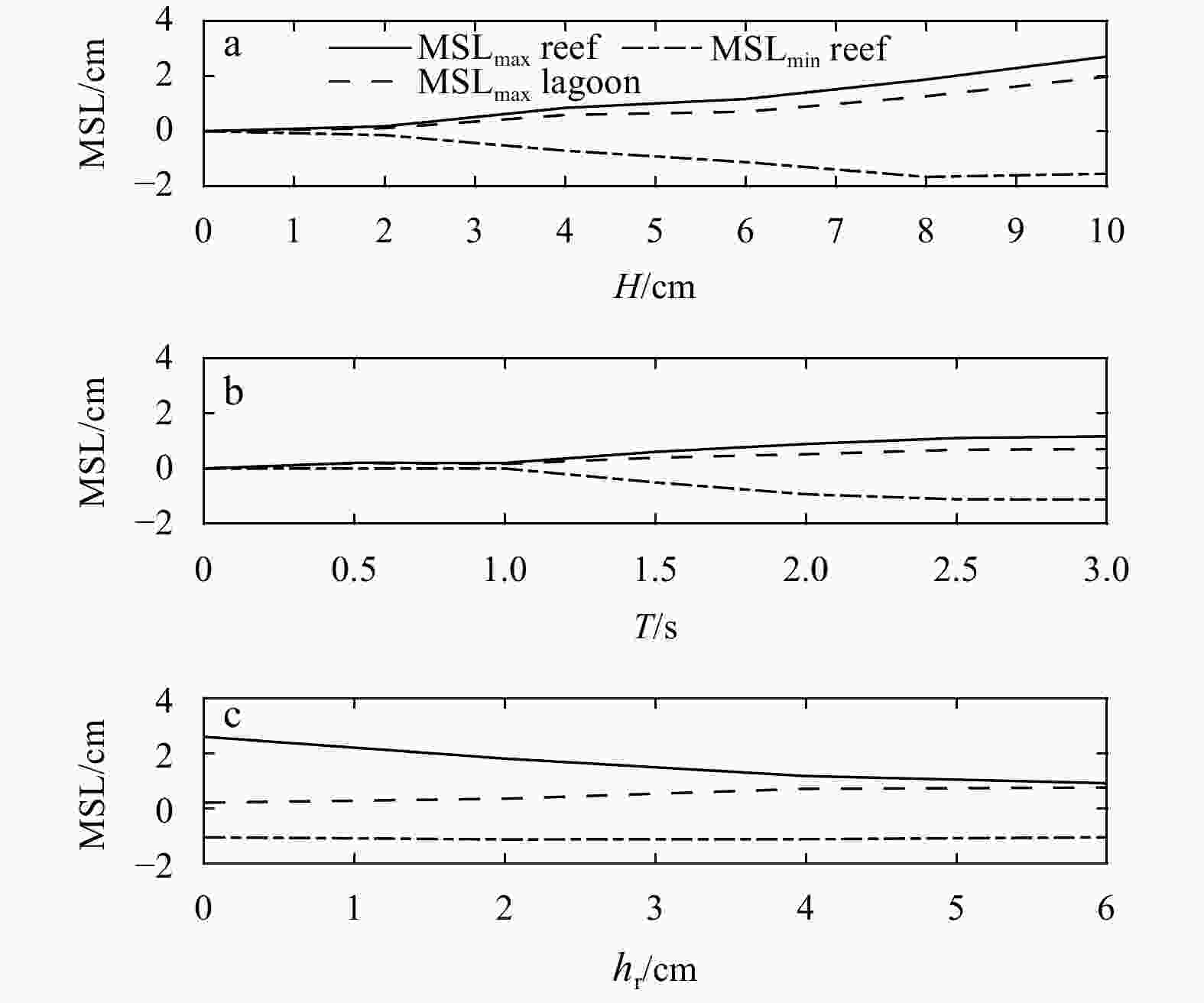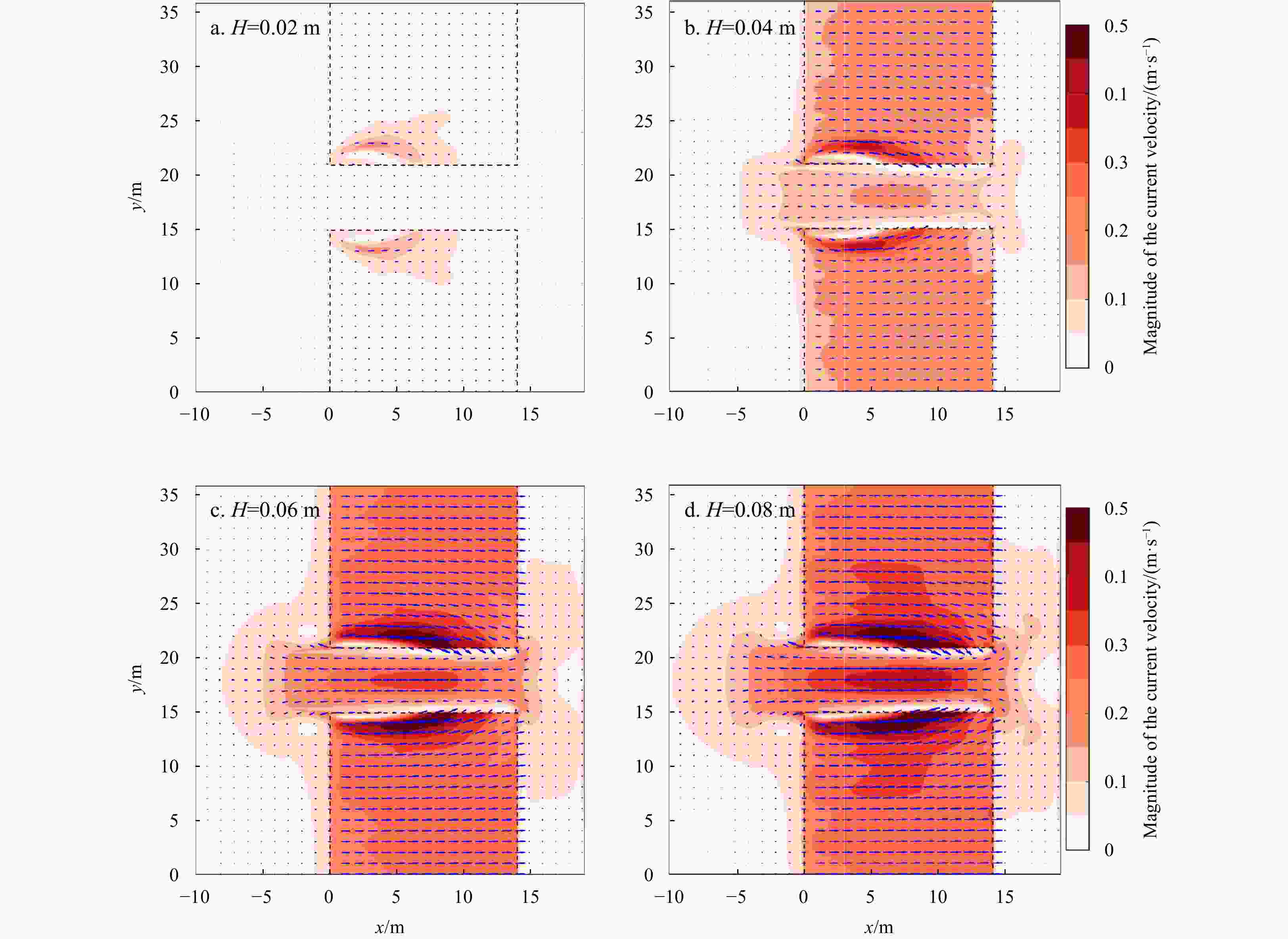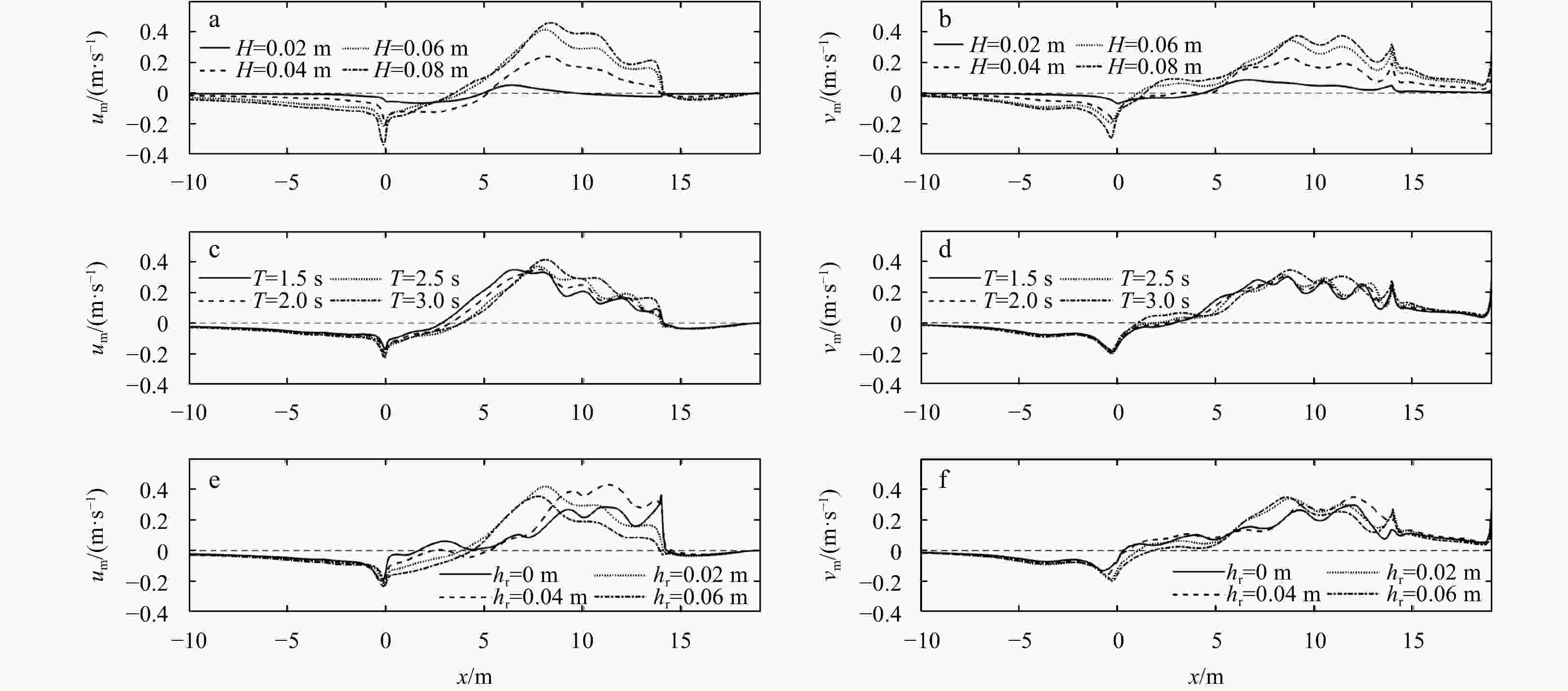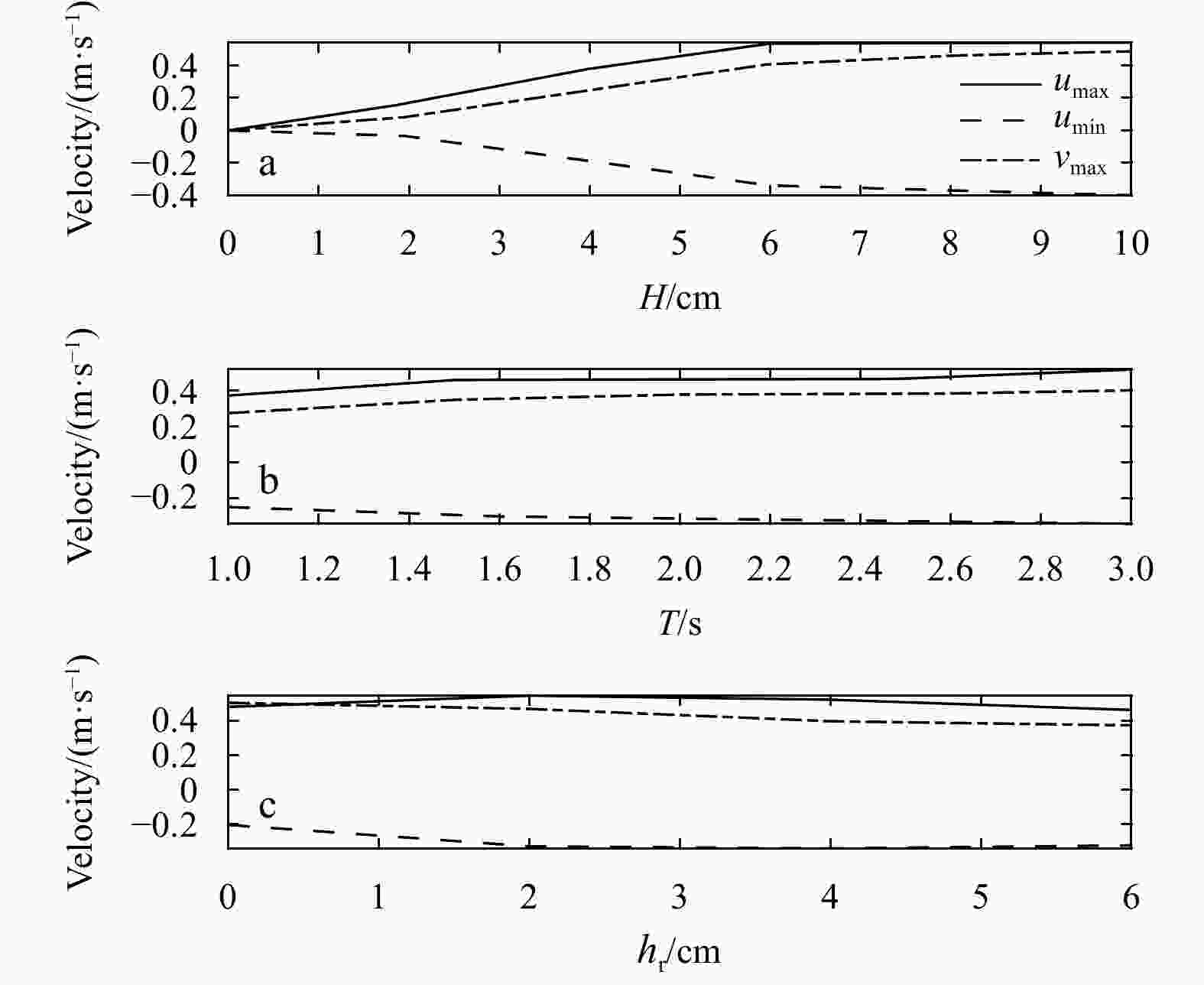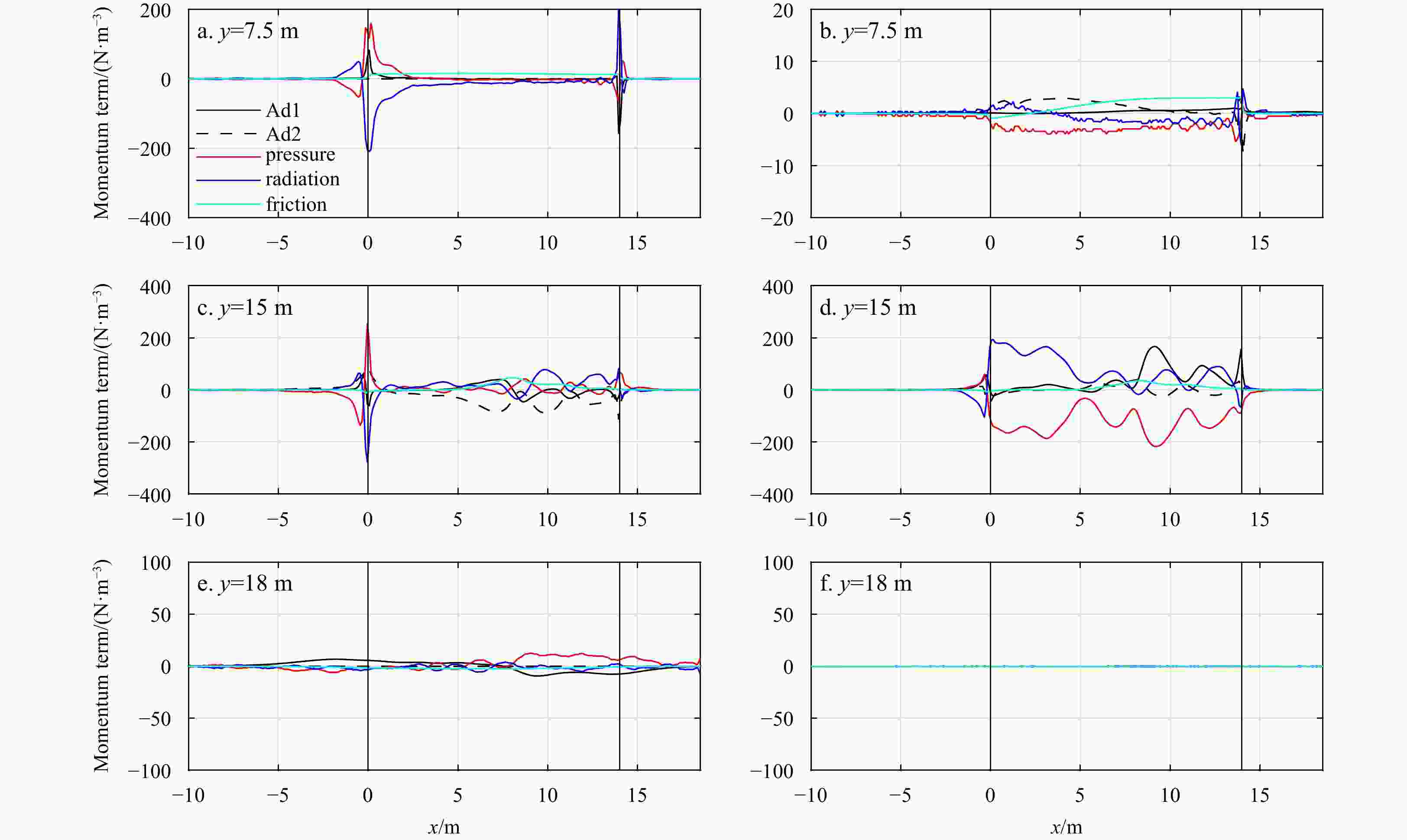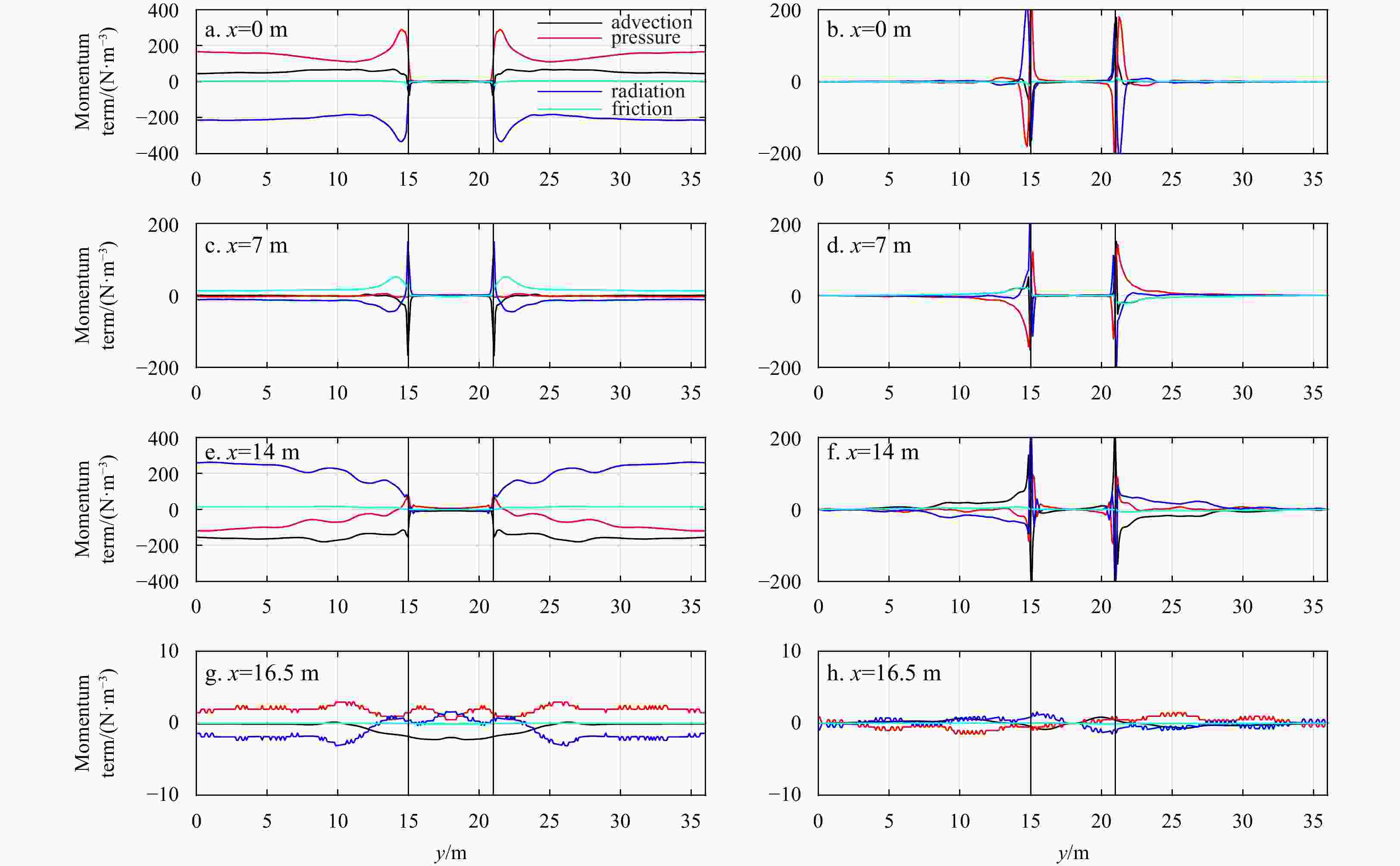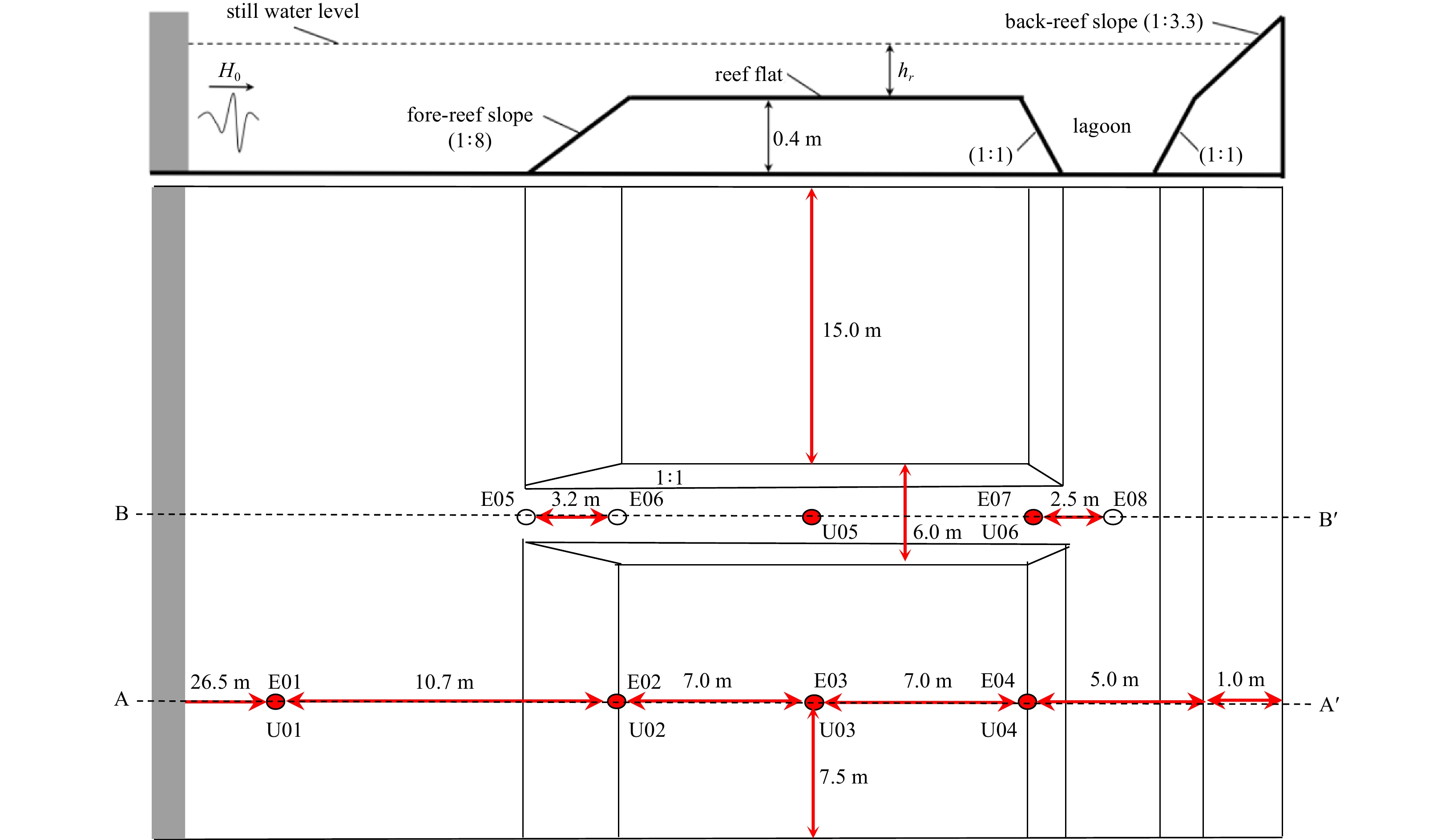Non-hydrostatic modelling of regular wave transformation and current circulation in an idealized reef-lagoon-channel system
-
Abstract: The wave-induced setup and circulation in a two dimensional horizontal (2DH) reef-lagoon-channel system is investigated by a non-hydrostatic model. The simulated results agree well with observations from the laboratory experiments, revealing that the model is valid in simulating wave transformation and currents over reefs. The effects of incident wave height, period, and reef flat water depth on the mean sea level and wave-driven currents are examined. Results show that the distributions of mean sea level and current velocities on the reef flat adjacent to the channel vary significantly from those in the area close to the side walls. From the wave averaged current field, an obvious alongshore flux flowing from the reef flat to the channel is captured. The flux from the reef flat composes the second source of the offshore rip current, while the first source is from the lagoon. A detailed momentum balance analysis shows that the alongshore current is mainly induced by the pressure gradient between the reef flat and the channel. In the lagoon, the momentum balances are between the pressure and radiation stress gradient, which drives flow towards the channel. Along the channel, the offshore current is mainly driven by the pressure gradient.
-
Key words:
- non-hydrostatic model /
- wave setup /
- wave-induced current /
- coral reef /
- reef-lagoon-channel system
-
Table 1. Summary of the numerical cases
Run No. H/m T/s h/m hr/m A1 0.02 3.0 0.44 0.04 A2 0.04 3.0 0.44 0.04 A3 0.06 3.0 0.44 0.04 A4 0.08 3.0 0.44 0.04 B1 0.06 1.5 0.44 0.04 B2 0.06 2.0 0.44 0.04 B3 0.06 2.5 0.44 0.04 C1 0.06 3.0 0.40 0.0 C2 0.06 3.0 0.42 0.02 C3 0.06 3.0 0.46 0.06 Table 2. Model skill and relative bias derived from the simulated surface elevation and velocity (u) for the 14 sites (E01−U08 and U01−U06) in Fig. 1
Site S RB Site S RB E01 (offshore) 0.98 −0.01 U01 (offshore) 0.97 −0.01 E02 (reef flat) 0.93 −0.01 U02 (reef flat) 0.95 −0.02 E03 (reef flat) 0.90 −0.001 U03 (reef flat) 0.90 0.03 E04 (reef flat) 0.89 −0.002 U04 (reef flat) 0.85 −0.01 E05 (channel) 0.91 −0.02 U05 (channel) 0.89 −0.02 E06 (channel) 0.90 0.01 U06 (channel) 0.90 0.01 E07 (channel) 0.92 0.01 − − − E08 (channel) 0.91 −0.01 − − − -
Ai Congfang, Ma Yuxiang, Yuan Changfu, et al. 2019. A 3D non-hydrostatic model for wave interactions with structures using immersed boundary method. Computers & Fluids, 186: 24–37 Ai Congfang, Ma Yuxiang, Yuan Changfu, et al. 2021. Non-hydrostatic model for internal wave generations and propagations using immersed boundary method. Ocean Engineering, 225: 108801. doi: 10.1016/j.oceaneng.2021.108801 Arzeno I B, Collignon A, Merrifield M, et al. 2018. An alongshore momentum budget over a fringing tropical fore-reef. Journal of Geophysical Research: Oceans, 123(11): 7839–7855. doi: 10.1029/2018JC014238 Buckley M L, Lowe R J, Hansen J E, et al. 2015. Dynamics of wave setup over a steeply sloping fringing reef. Journal of Physical Oceanography, 45(12): 3005–3023. doi: 10.1175/JPO-D-15-0067.1 Callaghan D P, Nielsen P, Cartwright N, et al. 2006. Atoll lagoon flushing forced by waves. Coastal Engineering, 53(8): 691–704. doi: 10.1016/j.coastaleng.2006.02.006 Demirbilek Z, Nwogu O G, Ward D L. 2007. Laboratory study of wind effect on Runup over fringing reefs: Report 1. data report. Washington: U S Army Corps of Engineers Derakhti M, Kirby J T, Shi Fengyan, et al. 2016. Wave breaking in the surf zone and deep-water in a non-hydrostatic RANS model. Part 1: Organized wave motions. Ocean Modelling, 107: 125–138. doi: 10.1016/j.ocemod.2016.09.001 Fang Kezhao, Yin Jiwei, Liu Zhongbo, et al. 2014. Revisiting study on Boussinesq modeling of wave transformation over various reef profiles. Water Science and Engineering, 7(3): 306–318 Fringer O B, Gerritsen M, Street R L. 2006. An unstructured-grid, finite-volume, nonhydrostatic, parallel coastal ocean simulator. Ocean Modelling, 14(3–4): 139–173. doi: 10.1016/j.ocemod.2006.03.006 Gourlay M R. 1994. Wave transformation on a coral reef. Coastal Engineering, 23(1−2): 17–42. doi: 10.1016/0378-3839(94)90013-2 Gourlay M R. 1996. Wave set-up on coral reefs: 1. Set-up and wave- generated flow on an idealised two dimensional horizontal reef. Coastal Engineering, 27(3–4): 161–193. doi: 10.1016/0378-3839(96)00008-7 Haller M C, Dalrymple R A, Svendsen I A. 2002. Experimental study of nearshore dynamics on a barred beach with rip channels. Journal of Geophysical Research: Oceans, 107(C6): 3061. doi: 10.1029/2001JC000955 Hearn C J. 1999. Wave-breaking hydrodynamics within coral reef systems and the effect of changing relative sea level. Journal of Geophysical Research: Oceans, 104(C12): 30007–30019. doi: 10.1029/1999JC900262 Hench J L, Leichter J J, Monismith S G. 2008. Episodic circulation and exchange in a wave-driven coral reef and lagoon system. Limnology and Oceanography, 53(6): 2681–2694. doi: 10.4319/lo.2008.53.6.2681 Hu Zhan, Suzuki T, Zitman T, et al. 2014. Laboratory study on wave dissipation by vegetation in combined current-wave flow. Coastal Engineering, 88: 131–142. doi: 10.1016/j.coastaleng.2014.02.009 Li Yuan, Zhang Chi, Dai Weiqi, et al. 2022. Laboratory investigation on morphology response of submerged artificial sandbar and its impact on beach evolution under storm wave condition. Marine Geology, 443: 106668. doi: 10.1016/j.margeo.2021.106668 Lin Pengzhi, Liu P L F. 1998. A numerical study of breaking waves in the surf zone. Journal of Fluid Mechanics, 359: 239–264. doi: 10.1017/S002211209700846X Lowe R J, Falter J L, Monismith S G, et al. 2009. Wave-driven circulation of a coastal reef-lagoon system. Journal of Physical Oceanography, 39(4): 873–893. doi: 10.1175/2008JPO3958.1 Lowe R J, Hart C, Pattiaratchi C B. 2010. Morphological constraints to wave-driven circulation in coastal reef-lagoon systems: a numerical study. Journal of Geophysical Research: Oceans, 115(C9): C09021 Ma Gangfeng, Shi Fengyan, Kirby J T. 2012. Shock-capturing non-hydrostatic model for fully dispersive surface wave processes. Ocean Modelling, 43–44: 22–35 Ma Gangfeng, Su Shih-Feng, Liu Shuguang, et al. 2014. Numerical simulation of infragravity waves in fringing reefs using a shock-capturing non-hydrostatic model. Ocean Engineering, 85: 54–64. doi: 10.1016/j.oceaneng.2014.04.030 Massel S R, Gourlay M R. 2000. On the modelling of wave breaking and set-up on coral reefs. Coastal Engineering, 39(1): 1–27. doi: 10.1016/S0378-3839(99)00052-6 Maréchal D. 2004. A soil-based approach to rainfall-runoff modelling in ungauged catchments for England and Wales [dissertation]. Cranfield, UK: Cranfield University, 157 Monismith S G. 2014. Flow through a rough, shallow reef. Coral Reefs, 33(1): 99–104. doi: 10.1007/s00338-013-1107-0 Oprandi A, Montefalcone M, Morri C, et al. 2019. Water circulation, and not ocean acidification, affects coral recruitment and survival at shallow hydrothermal vents. Estuarine, Coastal and Shelf Science, 217: 158–164 Shi Jian, Shi Fengyan, Kirby J T, et al. 2015. Pressure decimation and interpolation (PDI) method for a baroclinic non-hydrostatic model. Ocean Modelling, 96: 265–279. doi: 10.1016/j.ocemod.2015.09.010 Shi Jian, Shi Fengyan, Zheng Jinhai, et al. 2019a. Interplay between grid resolution and pressure decimation in non-hydrostatic modeling of internal waves. Ocean Engineering, 186: 106110. doi: 10.1016/j.oceaneng.2019.06.014 Shi Jian, Zhang Chi, Zheng Jinhai, et al. 2018. Modelling wave breaking across coral reefs using a non-hydrostatic model. Journal of Coastal Research, 85(sp1): 501–505 Shi Jian, Zheng Jinhai, Zhang Chi, et al. 2019b. A 39-year high resolution wave hindcast for the Chinese coast: model validation and wave climate analysis. Ocean Engineering, 183: 224–235. doi: 10.1016/j.oceaneng.2019.04.084 Sous D, Dodet G, Bouchette F, et al. 2020. Momentum balance across a barrier reef. Journal of Geophysical Research: Oceans, 125(2): e2019JC015503 Stelling G, Zijlema M. 2003. An accurate and efficient finite-difference algorithm for non-hydrostatic free-surface flow with application to wave propagation. International Journal for Numerical Methods in Fluids, 43(1): 1–23. doi: 10.1002/fld.595 Storlazzi C D, Elias E P L, Berkowitz P. 2015. Many atolls may be uninhabitable within decades due to climate change. Scientific Reports, 5(1): 14546. doi: 10.1038/srep14546 Symonds G, Zhong Liejun, Mortimer N A. 2011. Effects of wave exposure on circulation in a temperate reef environment. Journal of Geophysical Research: Oceans, 116(C9): C09010 Taebi S, Lowe R J, Pattiaratchi C B, et al. 2012. A numerical study of the dynamics of the wave-driven circulation within a fringing reef system. Ocean Dynamics, 62(4): 585–602 Wu Zhiyuan, Jiang Changbo, Deng Bin, et al. 2018a. Evaluation of numerical wave model for typhoon wave simulation in South China Sea. Water Science and Engineering, 11(3): 229–235. doi: 10.1016/j.wse.2018.09.001 Wu Guoxiang, Shi Fengyan, Kirby J T, et al. 2018b. Modeling wave effects on storm surge and coastal inundation. Coastal Engineering, 140: 371–382. doi: 10.1016/j.coastaleng.2018.08.011 Wu Hui, Zhu Jianrong, Shen Jian, et al. 2011. Tidal modulation on the Changjiang River plume in summer. Journal of Geophysical Research: Oceans, 116(C8): C08017 Yan Zhiduo, Liang Bingchen, Wu Guoxiang, et al. 2020. Ultra-long return level estimation of extreme wind speed based on the deductive method. Ocean Engineering, 197: 106900. doi: 10.1016/j.oceaneng.2019.106900 Yao Yu, Chen Songgui, Zheng Jinhai, et al. 2020. Laboratory study on wave transformation and run-up in a 2DH reef-lagoon-channel system. Ocean Engineering, 215: 107907. doi: 10.1016/j.oceaneng.2020.107907 Yao Yu, Huang Zhenhua, He Wenrun, et al. 2018. Wave-induced setup and wave-driven current over Quasi-2DH reef-lagoon-channel systems. Coastal Engineering, 138: 113–125. doi: 10.1016/j.coastaleng.2018.04.009 Zhang Chi, Li Yuan, Zheng Jinhai, et al. 2021. Parametric modelling of nearshore wave reflection. Coastal Engineering, 169: 103978. doi: 10.1016/j.coastaleng.2021.103978 Zhang Chi, Zhang Qingyang, Zheng Jinhai, et al. 2017. Parameterization of nearshore wave front slope. Coastal Engineering, 127: 80–87. doi: 10.1016/j.coastaleng.2017.06.008 Zheng Jinhai, Yao Yu, Chen Songgui, et al. 2020. Laboratory study on wave-induced setup and wave-driven current in a 2DH reef-lagoon-channel system. Coastal Engineering, 162: 103772. doi: 10.1016/j.coastaleng.2020.103772 Zijlema M, Stelling G, Smit P. 2011. SWASH: an operational public domain code for simulating wave fields and rapidly varied flows in coastal waters. Coastal Engineering, 58(10): 992–1012. doi: 10.1016/j.coastaleng.2011.05.015 -





 下载:
下载:
